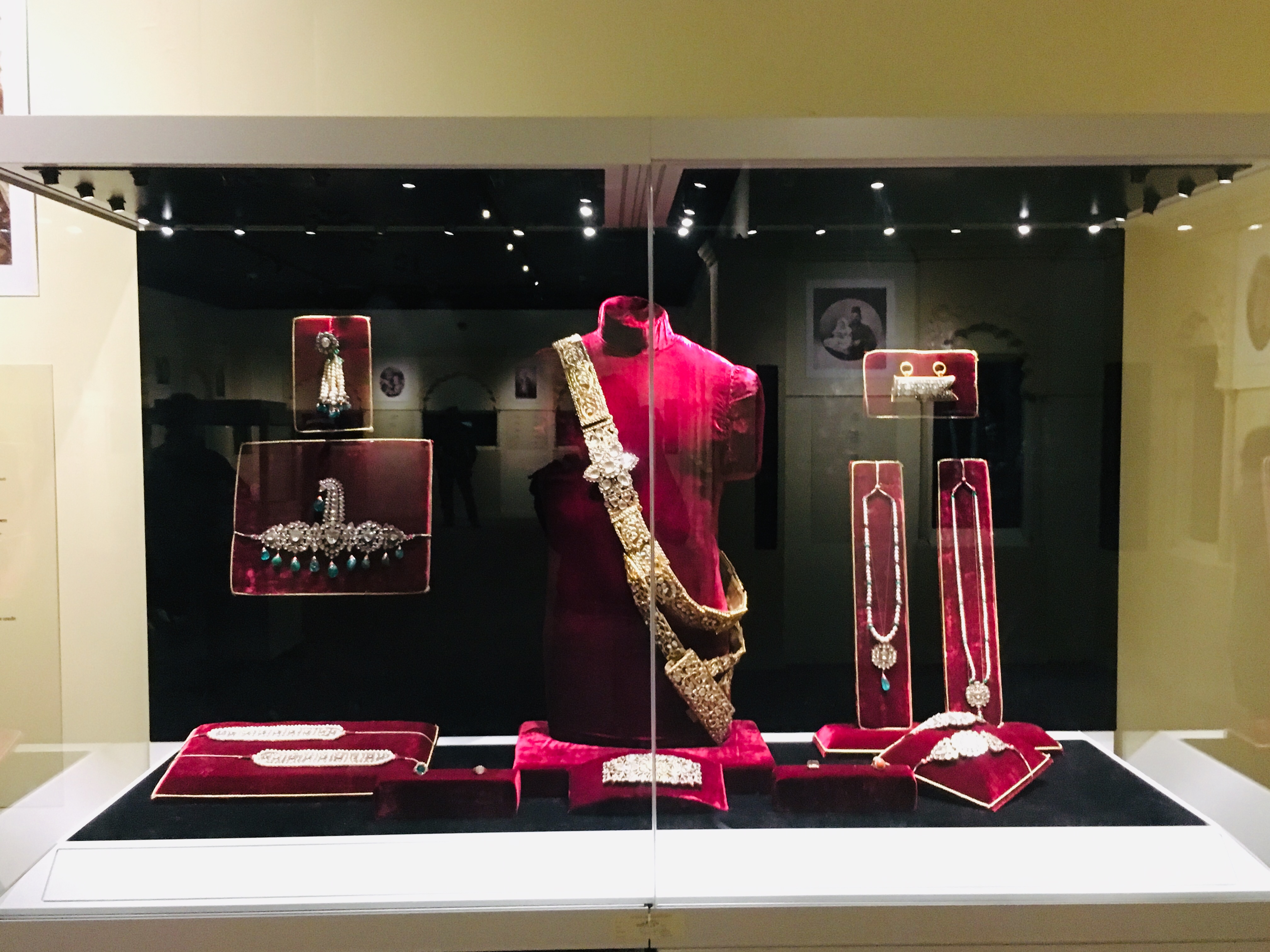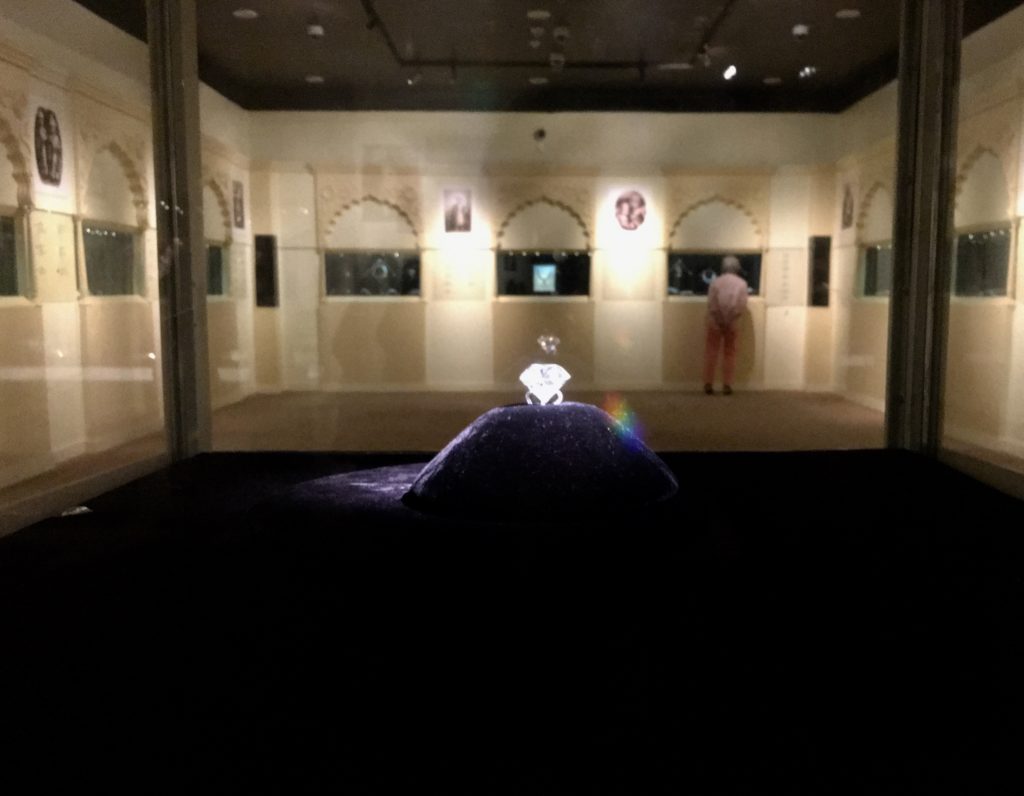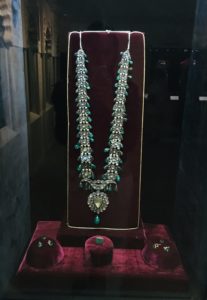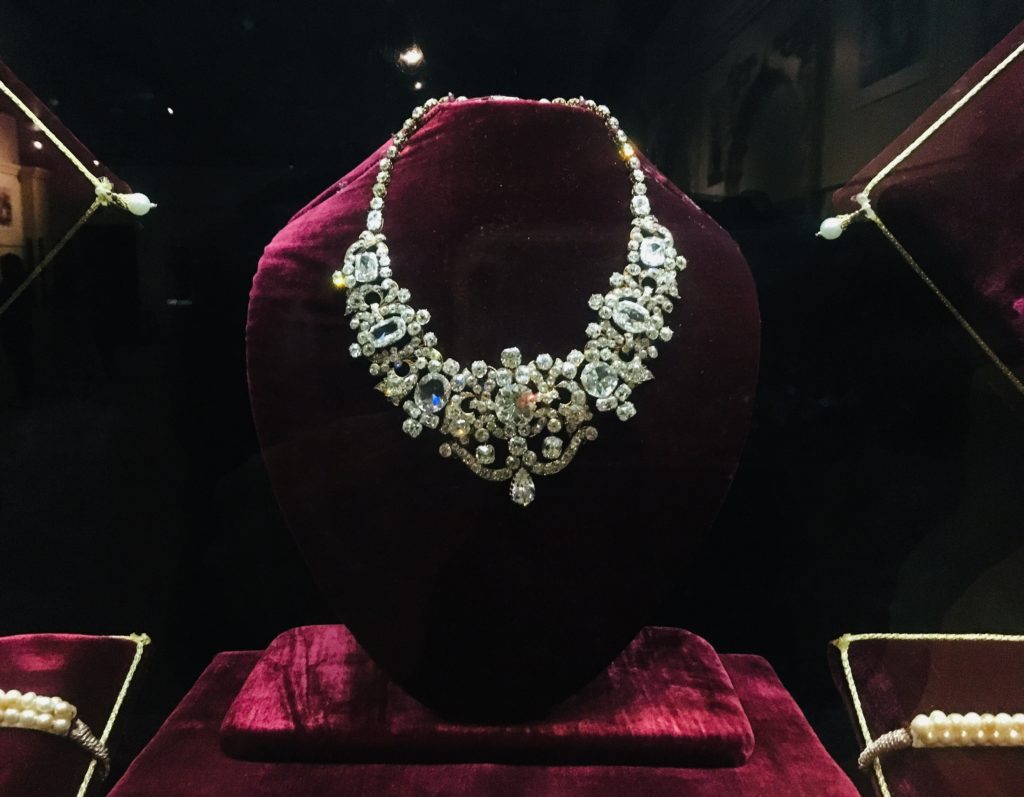Priceless Nizam jewellery on display
Shiny sapphires, red rubies, dazzling diamonds…this exhibit is likely to change what you know of these gems and how you see them.
On display at the National Museum in the Indian capital, Delhi, currently is a collection of the Nizam’s family jewellery. Exhibited after 11 years, the collection comprises 173 pieces, all posing exquisite and rare gems and craftsmanship.
Also on showcase is the Jacob diamond, said to be the fifth largest diamond in the world and, at precisely 184.50 carats, almost double the size of the popular Kohinoor diamond.
In the glass show windows, which are heavily guarded, visitors can view the royal sheeth (case for the sword), pearl necklaces, karn phool (type of earrings), choti tabiz (hair accessory), bracelets, kangan (bangles), toe rings, pazeb (anklets), brooch, sarpech (turban accessory), buttons, cufflinks, belts, buckles, pocket watch, arm bands, chintak (neckpiece), nath (nose ring), teen ladi haar (neckpiece with three layers), haar murasa, rings, all of a rare and fascinating beauty and studded with the most exquisite cut and uncut diamonds, rubies, emeralds, sapphires and other gems. There is also a collection of 22 unset emerald pieces.
While most of the diamonds in the jewellery are from mines in Golconda (Andhra Pradesh), the emeralds are from Colombia, pearls from Basra (Iraq) and rubies and spinels from Burma.
Interestingly some of these jewels are from the 17th or early 18th century when they became part of the Hyderabad treasury at the time of the annexation of the Deccan by Mughal emperor Aurangzeb.
Now in possession of the Reserve Bank of India, the collection was amassed by the Government of India after a long standing and hefty negotiation. Here is a peek into the history.
Who were the Nizams?
The eighteenth century, witnessed downfall of the Mughal Empire and rise of provincial rulers in north and south. In south India, the most powerful rulers, who ruled for more than two hundred years, were the Nizams. The founder of the dynasty, Mir Qamaruddin started as the viceroy of Deccan and slowly and gradually established his own rule in the name of Asaf Jahi dynasty.
The collection and the Mughal influence
Soon after India’s independence, the seventh Nizam, Mir Osman Ali Khan created 54 trusts, where the collection remained until 1995, when the Government of India bought it at a cost of INR 2.18 billion. It is now one of the largest and richest collections of jewels ever purchased by the government and the actual value of which remains unknown as the cost is difficult to calculate due to the historic significance attached to the collection and also because of the uniqueness of every piece.
Records state that the Nizams were the biggest buyers of the best of gems in the world. Interestingly, this lifestyle was influenced from Mughals, the former rulers of the region they reigned in; and since the Mughal rule was also dominant in north India, some pieces of jewellery, like the haar murassa, is a fusion of the northern and southern styles of designs.
A pair of armbands in the collection too reflects Mughal tastes. In fact majority of the pieces display the continuity of Deccani craftsmanship and Mughal aesthetics.
A European edge
Princely taste in 19th century shows a European influence in its ornament types, techniques, designs and production. Lacy necklaces set with diamonds and necklaces with diamonds and button pearls claw-set in light mounts with European clasps exhibit a completely western design idiom.
The influence is also visible in the turban ornaments that are rendered in a more modern style, devoid of enamel, with gems in open-backed claw settings, making the Nizam collection a unique work of Deccani, Mughal and European art.
The exhibition will remain open till May 5, 2019. “From time immemorial, the existence of jewellery in society has been a common phenomenon but Nizams’ jewellery occupies a secure and specific position to study the socio-cultural heritage,” says Sanjib Kumar Singh, curator of the exhibition and archaeologist & museologist at the National Museum. “Here ornaments related to male are also very prominent, hence conveying that jewellery not only enhances the beauty of female but adds to the charm of male too,” he adds.













